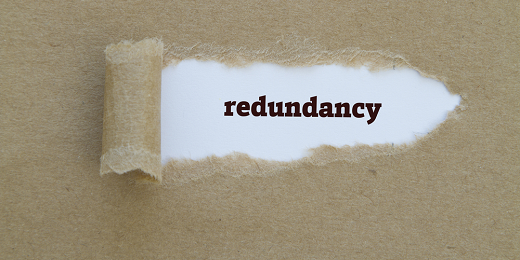Checking Out the Operational Dynamics of Company Redundancy and Its Long-Term Sustainability

Redundancy Approaches for Business Continuity
In order to guarantee uninterrupted operations, businesses need to apply effective redundancy approaches for service connection. Redundancy in this context refers to the duplication of essential components or features within a system to mitigate the impact of prospective failings. By incorporating redundancy strategies, organizations can improve their durability versus disruptions triggered by different aspects such as all-natural calamities, tools failures, or cyber-attacks.
One usual redundancy method is the application of back-up systems and data storage services. This involves creating matches of essential data and systems that can be triggered in instance of a main system failure. Furthermore, companies can develop repetitive interaction networks and power sources to maintain connection and procedures throughout unexpected occasions.
Additionally, cross-training workers to do numerous roles within the firm can function as a useful redundancy technique. If key personnel are unavailable due to disease or various other reasons, this makes sure that important jobs can still be lugged out also. On the whole, reliable redundancy methods are essential for businesses to promote operational continuity and minimize the impact of prospective disturbances.
Effect of Redundancy on Organizational Durability
Given the crucial role redundancy strategies play in making certain business connection, checking out the impact of redundancy on business resilience becomes imperative for understanding the holistic functional characteristics of a company. Redundancy, when tactically applied, can significantly contribute to improving a company's strength in the face of unexpected difficulties.
Additionally, redundancy can cultivate technology and creativity within a company as staff members feel empowered to take computed dangers, knowing that there is a safety internet to support them in situation of failure. Generally, the effect of redundancy on business resilience is profound, shaping the long-lasting sustainability and success of a firm.
Balancing Effectiveness and Adaptability in Redundancy
Attaining a harmonious equilibrium in between operational efficiency and adaptive flexibility is a critical obstacle look at here in the calculated release of redundancy within companies. Too much flexibility without a strong operational structure can result in inadequacies and variance.
To balance performance and versatility in redundancy planning, companies must carefully assess their operational needs, market characteristics, and critical goals. Applying lean methods can improve efficiency by getting rid of and enhancing procedures waste, while fostering a culture of flexibility and constant enhancement can enhance versatility. Additionally, buying cross-training programs and durable communication networks can assist cultivate a functional workforce with the ability of handling varied jobs throughout periods of shift. Eventually, locating the best equilibrium in between performance and flexibility is essential for developing a sustainable and resistant company when faced with uncertainty.
Long-Term Sustainability With Redundancy Preparation
To make sure long-lasting viability and security, organizations should tactically straighten their redundancy planning with long-lasting sustainability goals, thus harmonizing operational efficiency with adaptive adaptability. Business must watch redundancy not as a responsive option to prompt problems but as a proactive method for lasting success.

Positive Steps for Sustainable Company Procedures
How can firms proactively enhance their functional sustainability for long-lasting success? Applying aggressive steps is crucial for business aiming to make certain sustainable procedures.
In addition, promoting a culture of continual enhancement and knowing within the company can boost adaptability to changing market problems and consumer demands. Motivating staff member involvement in decision-making procedures and giving opportunities for expert development can enhance morale, performance, and total performance. Developing clear goals, keeping track of key performance indications, and consistently reviewing progression are crucial parts of proactive sustainability administration.
Collaborating with vendors, clients, and other stakeholders to promote lasting methods throughout the supply chain can develop a ripple result of positive influence - redundancy pay if company goes bust. By taking positive steps towards operational sustainability, companies can construct resilience, drive this contact form innovation, and protect their lasting success in an ever-evolving business landscape
Final Thought

In the world of business management, the strategic implementation of business redundancy stands as an essential yet elaborate technique that demands a delicate balance in between functional performance and long-term practicality. By studying the operational dynamics that underpin business redundancy and examining its more comprehensive ramifications for business resilience and flexibility, a nuanced understanding of just how redundancy strategies can form the future trajectory of a firm begins to unravel.Offered the vital role redundancy methods play in making certain organization connection, exploring the effect of redundancy on business resilience ends up being important for understanding the all natural functional dynamics of a company. Overall, the impact of redundancy on organizational durability is profound, forming the long-lasting sustainability and success of a company.
In conclusion, recognizing the operational dynamics of company redundancy is crucial for making certain long-lasting sustainability.
Comments on “Clarified: If a Company Goes Bust Who Pays Redundancy in the UK?”